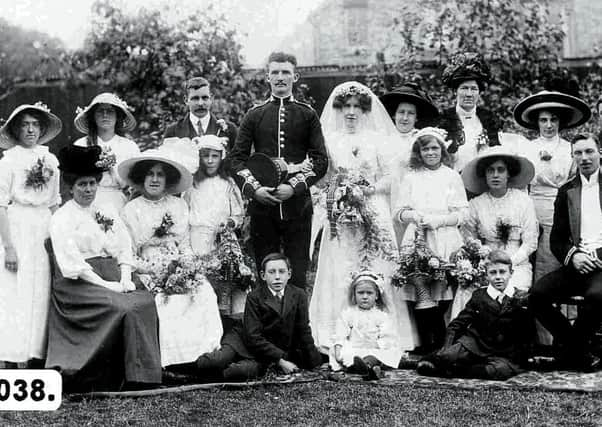Biggar’s Great War heroes are remembered


How then, on the centenary of that conflict, do you turn these cold, chiselled names back into the living, laughing, loving sons, brothers and fathers they once were?
At this distance of time – with even the baby sons and daughters these men left behind now mostly gone – it’s an almost impossible task which only the most dedicated and skilful local historian could pull off.
Take a bow, then, Ann Mathieson.
Advertisement
Hide AdAdvertisement
Hide AdWith fine timing for the very start of the grim centenary, Ann’s book with the self-explanatory title Biggar In The First World War has just been published by Stenlake and it’s a work that does both the author and the publishers enormous credit.
Packed into just under 100 pages, the reader is painted a full portrait in classic photographs and in words of not only the men themselves but of the peaceful wee town they left to die a violent death hundreds of miles away from.
That stark figure of 56 lost men of Biggar Ann chillingly puts into context by stating that, with around 700 males of fighting age at the start of that conflict, the town had, by The Armistice four years later, lost eight per cent of its young male population – more than FOUR times the UK average and over two times even the disproportionate sacrifice Scotland as a whole made.
And that’s just about the one and only statistic she quotes in this excellent, deeply researched work which she states from the very start is NOT just an expanded list of the dead but a narration of the true impact a huge war had on what was then still a wee town.
Advertisement
Hide AdAdvertisement
Hide AdMaking the feelings reading this all the keener are the early chapters which show what an almost idyllic, safe and cosy rural community pre-1914 Biggar was.
This is well portrayed by Ann’s selection of many pictures of that ordinary Biggar life that came to an abrupt end that summer of 1914; photos of the opening of the Public park in 1907 with the town’s young ladies in their elegant Edwardian finery; the parade though the (then) Main Street to celebrate King George’s coronation in 1911; the marriage of young trooper John Prestwell to his sweetheart Maud in 1912 – the same John Prestwell whose name is one of the 56 on that Biggar War Memorial. In fact, he was one of the first to die, he and Maud enjoying a scant two years of married life together before German bullets cut him down barely a month after the war began.